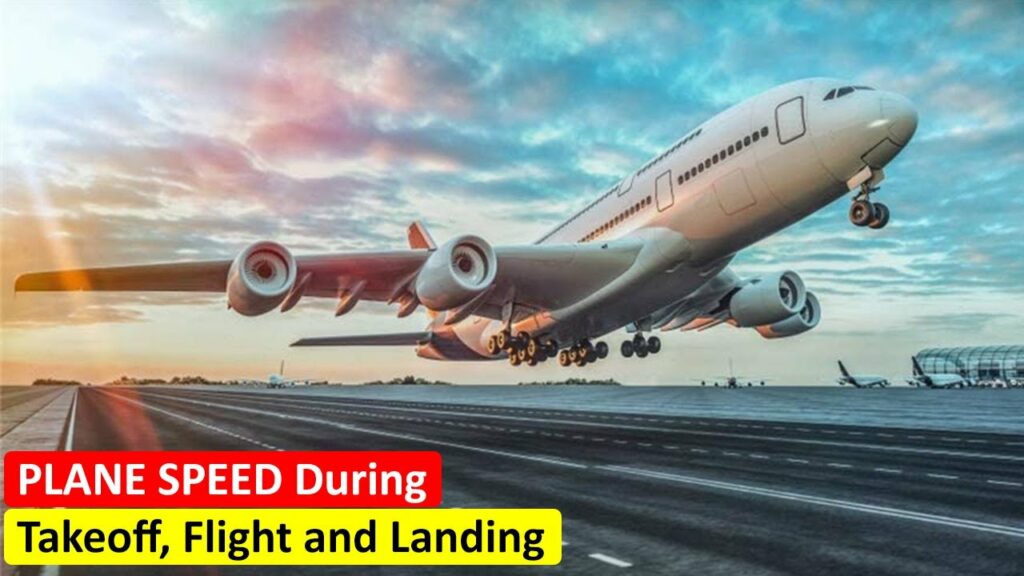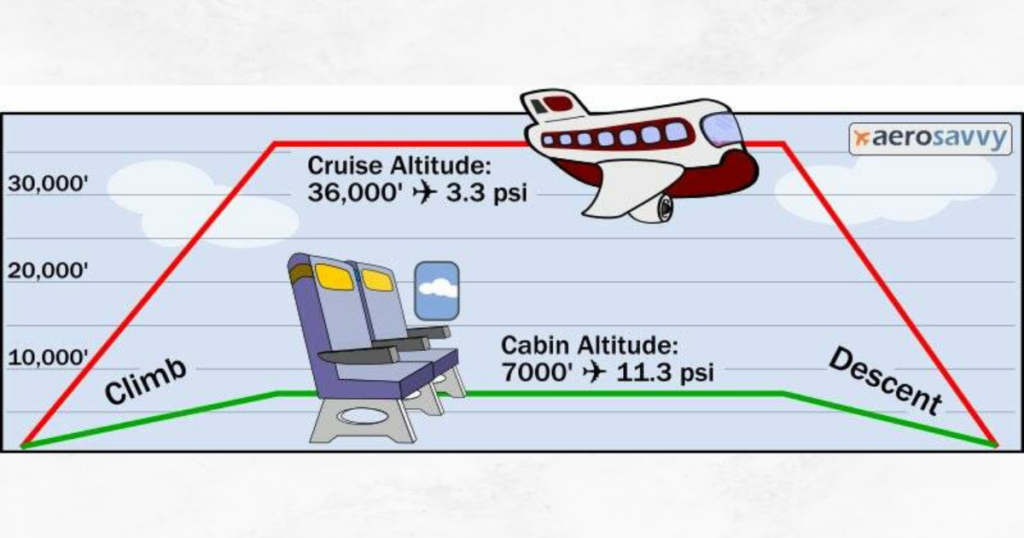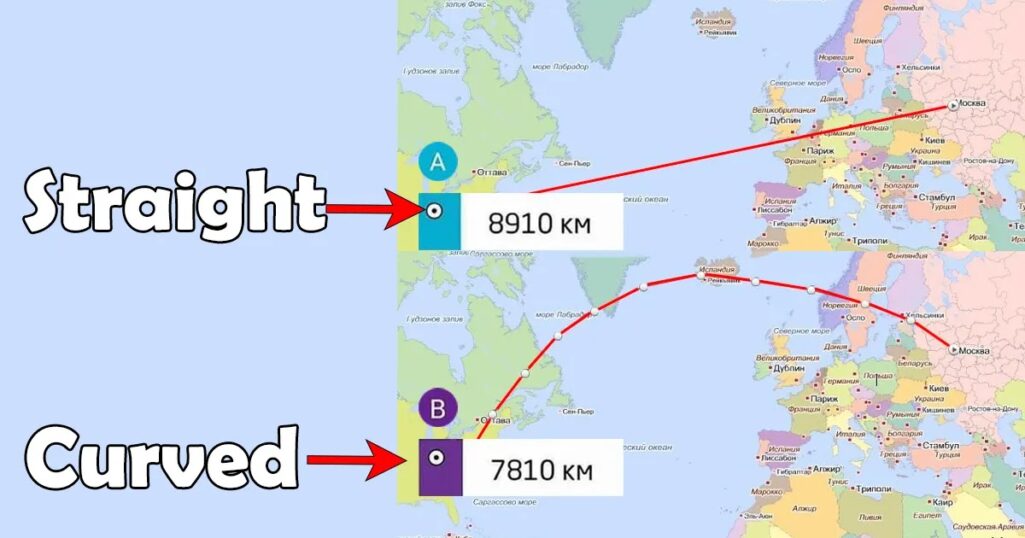
The speed at which planes can fly has significantly changed due to manufacturing advancements. Since the Wright brothers’ first powered flight in 1903, aircraft designs have significantly evolved, enabling quicker and more effective flying.
The Wright Flyer, the Wright brothers’ first powered aircraft, had a small petrol engine and could only travel at a peak speed of 35 mph. In the 1950s, the invention of jet engines allowed for far quicker flight than was previously conceivable.
Compared to piston engines, which were once the most prevalent engine in airplanes, these engines are significantly more powerful and efficient. The development of jet engines has allowed aircraft to travel at 600 mph or more speeds.
Many speed records have been broken since then as development has routed into modern times.
Factors Affecting the Speed of a Plane

Source: AOPA
Altitude
The air becomes less dense as one rises in altitude. The wing produces less lift as a result. As a result, a 747, for instance, may struggle to maintain altitude and lose speed as it struggles to maintain its lift.
High altitudes also result in less dense air going through the engines and over the wings, reducing the acceleration the engines can exert. Especially at elevated heights with a fragile atmosphere, this may cause the 747 to lose speed. On the contrary, as the air density decreases at high elevations, the drag on the aircraft may also decrease, allowing it to maintain or even increase speed.
Weight
The weight of an airplane can also affect its performance and speed. For instance, a heavy Airbus A380 needs more power to travel at a certain speed than a lighter Airbus A320.
Engine type
An airplane’s speed may also depend on the kind of engine it uses. Because they are more effective and powerful than piston engines, jet engines, like the ones in the Boeing 777, are frequently used in larger aircraft.
Wind
The force of the wind may have a significant impact on the aircraft’s speed. The wind’s speed and direction can impact the aircraft’s ground speed, the velocity at which it traverses the ground, and its airspeed, which is the pace at which it goes in the air.
The wind condition is categorized according to its direction:
1. Headwind
“Headwind” refers to a wind blowing in the opposite direction. Headwinds can reduce a plane’s speed because they work against its motion.
2. Tailwind
A “tailwind” is a wind that moves in the same direction as the aircraft.
Aircraft design
An airplane’s design can also affect its maximum speed. There is a role for aerodynamics. This is relevant to the engines’ placement and the wings’ design.
How much drag is produced mainly depends on the wing’s form. The position of an aircraft’s engines can also impact its speed.
The engine’s location can alter the aircraft’s thrust and drag characteristics, which affects its speed and performance.
For instance, private aircraft are more aerodynamically efficient than enormous commercial airplanes. An airplane experiences less turbulence, the more streamlined it is.

How Is a Plane’s Speed Measured?
The speed of an airplane, or airspeed, may commonly be determined by four basic methods:
1. Indicated Airspeed (IAS)
Static pressure and the aircraft’s pilot tube measure indicated airspeed. The pilot’s airspeed indicator, which may be a standalone gauge or a component of a main flight display or PFD, shows this measurement.
2. True Airspeed (TAS)
The aircraft’s speed in proportion to the air around it is measured as true airspeed. The IAS will be less accurate since the ambient air pressure is lower at higher elevations.
3. Groundspeed (GS)
Groundspeed gauges how fast an aircraft moves compared to a specific location on the ground. The accurate definition of GS is real airspeed adjusted for wind.
4. Calibrated Airspeed (CAS)
The calibrated airspeed is computed using indicated airspeed adjusted for measurement inaccuracies. Particularly at slower speeds, CAS is beneficial.
Units of Measurement of Speed
MPH
Mph is a unit of measurement frequently used for aviation and ground transportation, and it calculates how far an item can move in an hour.
Mach
Mach number is a unit of measurement that contrasts an object’s speed with the sound speed. By subtracting the speed of sound from the aircraft’s speed, one may calculate Mach. However, at various air pressures, the sound speed changes.
The Speed at Different Intervals

The Speed of a plane is not always the same, it changes from period to period, and here we will explain them in detail.
During Takeoff
Typically, an airplane will fly at a low speed when it accelerates down the runway and lifts off the ground during takeoff. The aircraft’s weight and size, the runway’s length, and other variables will all affect the precise speed.
During Cruising
An airplane typically flies reasonably constantly until it reaches its cruising altitude. The aircraft’s size, type, environmental elements, and wind and air density will all affect the precise cruising speed.
During Landing
An aircraft typically flies slowly as it approaches the runway and touches down during a landing.
Examples Of Airplane Speeds
Different types of planes exhibit different speeds. Following are the examples which support the previous statement.
Commercial airliners
The typical speed of passenger aircraft like the Boeing 747 and the Airbus A380 is 500 to 600 mph. Cruising at these speeds is more effective, although they can move faster.
Military Jets
Military aircraft designed for high-speed flying include the F-16 Fighting Falcon and the F-35 Lightning II. They move at rates that can reach 1,500 mph or more on average.
Small General Aviation Planes
These aircraft are utilized for various purposes, including personal, business, and recreational travel. Examples of small general aviation aircraft are the Piper PA-28 and Cessna 172. These aircraft typically cruise at a speed of between 100 and 200 mph.
Private jets
Private aircraft are the pinnacle of swiftness. For instance, the Aerion AS2 can travel 1,200 miles per hour and cover the distance between New York and London in under three hours.
The Fastest Plane
The Lockheed SR-71 is the all-time fastest aircraft ever produced. The SR-71, sometimes called the “black bird,” is a military aircraft with a top speed of 3,900 km/h or 2,400 mph.
Reasons Aircraft Don’t Fly with Full Speed
Commercial aircraft rarely fly as fast as they are capable of. The typical commercial aircraft will only use 75% of its overall power while cruising. There are two primary justifications for airlines not operating their aircraft at full capacity:
Cost-Saving
By flying their aircraft at slower speeds, airlines save fuel and cut down on maintenance and operational expenses. There is no reason to modify the current situation as more consumers choose cheaper tickets with slightly earlier arrival timings.
Technical Issues
Because there is less air resistance when flying at lower speeds, there is also less damage to an aircraft that results from maintenance. Additionally, using the onboard instruments becomes more difficult as the aircraft flies at higher speeds.
More power would be needed to fly faster, especially since most engines are built to run most effectively at lower speeds. From a practical and technological standpoint, flying at higher speeds doesn’t make sense.
Final thoughts
Future technical developments in aerodynamics, materials, and propulsion systems may enable quicker flight for aircraft. Creating new materials, such as improved composites, might make aircraft lighter and stronger, enabling them to fly more efficiently and quickly.
The article lists numerous factors that affect and interpret airplane speed. The airplane is a complicated invention, and exact, on average, determination of its speed might not be possible, but measures have been listed that answer the question on various parameters.




